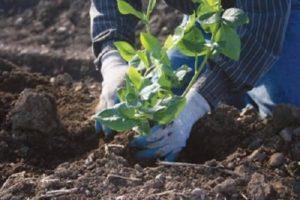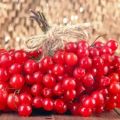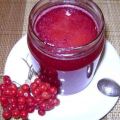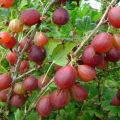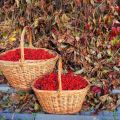Viburnum varieties and descriptions of varieties, growing regions
Viburnum has become popular among gardeners-summer residents because of the compact arrangement of bushes, abundant fruiting, attractive appearance. Berries are used for various preparations, decoctions are prepared with the help of leaves and many diseases are treated. In addition, several varieties of viburnum were bred by selection, which are suitable for growing in the most severe climatic conditions.
The nuances of choosing a culture
The common viburnum is widespread on the territory of Russia, on the basis of which the best breeding representatives are derived. For lovers of sweet cultures, sweet-fruited viburnum is bred. These varieties are distinguished by the absence of the usual bitterness of viburnum, although the supply of nutrients remains at the same level.
The choice of a variety depends on the climatic conditions of the region:
- for the Moscow region, remontant species are suitable, such as: Souzga, Taiga rubies;
- for areas with low winter temperatures: Ryabinushka, Zarnitsa, Sunset;
- sweet-fruited varieties grow in the southern regions: Vigorskaya, Shukshinskaya.
The best varieties of viburnum varieties
Kalina is grown not only for harvesting, but also as an ornamental shrub. Fruits on these varieties ripen according to the main fruiting calendar, but they are not edible.
Blue Muffin
Decorative grade. Suitable for growing in the southern regions and the Middle Strip due to its low frost resistance. Unpretentious. Has a second name - toothed viburnum - because of the notches along the edges of the sheet plate.

Distinctive features of the shrub:
- large white inflorescences;
- dark blue small fruits, collected in large clusters.
Gardeners note that the species is able to tolerate waterlogging of the soil, and can also decorate a personal plot of any type.
Buldenezh
Ornamental type shrub, which can grow up to 3 meters, blooms with white flowers, inflorescences are collected in a round ball. Resistant to frost, so it is often found in gardens in Siberia and the Urals.
Resistance to infestations and pests is considered an advantage.
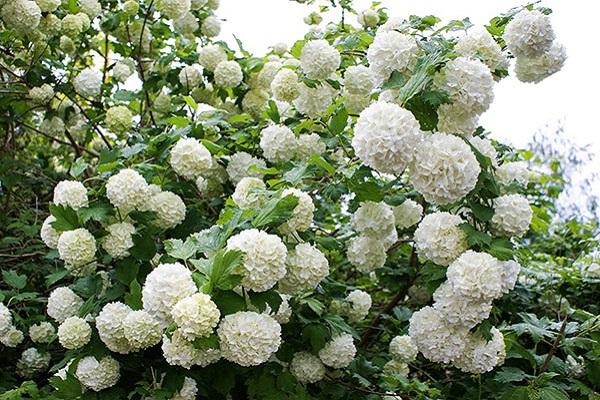
Vigorovskaya
Viburnum of this species was obtained by several crosses. The berries ripen in the second half of September and are edible. Fruit taste - sweet and sour, with characteristic bitterness. The mass of berries reaches half a gram, contains up to 45 percent of ascorbic acid.
The advantages of the variety:
- frost resistance;
- stable yield indicators.
Forked
A shrub that reaches 4 meters in height.It is grown on fertile soils, so it is almost impossible to meet this type on the territory of the Middle Strip. You can recognize this species in the fall, by brightly crimson leaves. The fruits of the bush have a hint of bitterness, but the content of nutrients in them is increased.
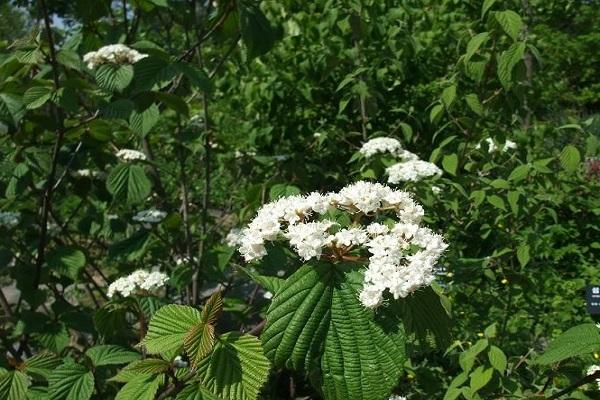
Gordovina or black
This is a shrub that is often used in order to diversify the overall picture of the plantings.
Fruits that appear in autumn gradually change color: from pink to black. They are recommended for making jams and jellies.
Late ripening of the berries does not allow this type to be grown in regions with early frosts.
Zholobovskaya
The shrub is classified as medium-sized, it reaches 2.5 meters. Bushes are located compactly, not prone to chaotic growth.
The fruits can weigh around 50-60 grams. The variety was bred sweet-fruiting, but, over time, at the 8-9 year of fruiting, bitterness begins to be felt in them.
The shrub is resistant to an abundance of precipitation, has average frost resistance.

Viburnum laurel variety
This shrub is small in size, the height ranges from 1 to 3 meters. In the southern territories, it begins to bloom in early spring. Flowers can be pink or pink-white. The fruits are blue and dark blue, bittersweet to the taste.
The homeland of this variety is the lands of the Mediterranean, therefore it is not grown in the Central Russia due to the requirements for the climate.
Canadian
The homeland of the variety is the eastern regions of Canada, where the shrub grows next to coniferous and spruce forests. Reaches 5-6 meters, has a spreading crown. After ripening, the small oval fruits turn black. The shrub begins to bear fruit after reaching 5 years of age, after which flowering and ovaries become abundant and annual.
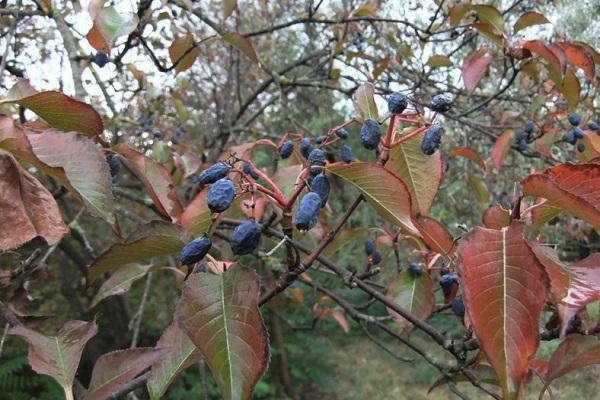
Red bunch
Suitable for southern regions, as it is not resistant to frost. The berries have a classic, bright red color, weighing up to 75 grams. This is a sweet-fruited variety, gardeners collect up to 5 kilograms of fruits from one bush.
The species is resistant to droughts, infestations and pests.
Maria
A breeding species that is bred for the northern regions.
Characteristics of berries:
- bitter taste;
- in shape - round, weighing up to 0.65 grams;
- color - scarlet.
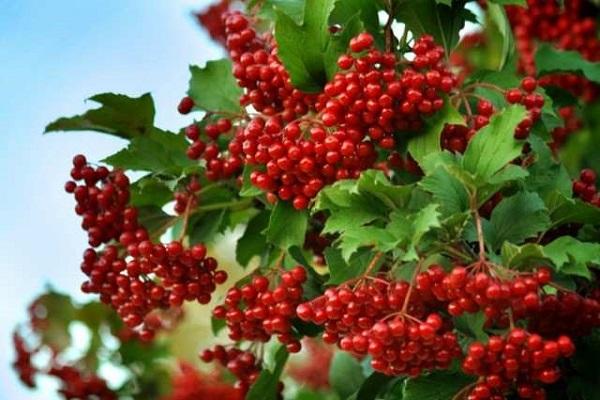
Wrinkled
The shrub reaches 3 meters, blooms with gray-yellow flowers. Suitable for areas with low winter temperatures. It got its name from the structure and shape of the leaf plates. They are oblong and rough to the touch.
The berries are red, oval. The peculiarity of the variety lies in its slow growth, despite the creation of optimal conditions.
Folded viburnum
The homeland of this variety is China, Japan.
The advantages of the variety:
- high frost resistance;
- flowering stability;
- tolerant of droughts and heavy rainfall.
The fruits are not suitable for nutrition, they are poisonous.
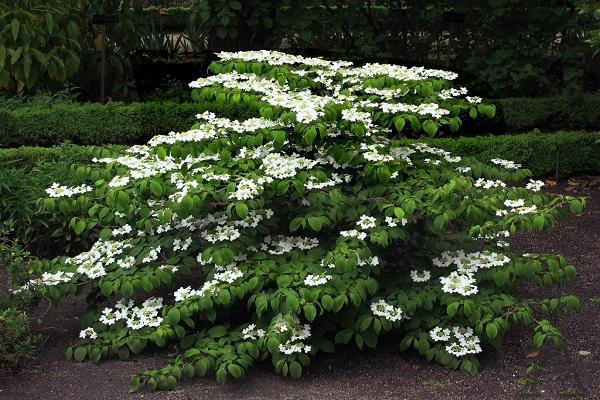
Ulgen
This type is suitable for landing in central regions. It is compact and does not grow more than 3 meters. Begins to bear fruit 3-4 years after planting, up to 4 kilograms of berries are harvested from one medium bush. Fruits reach 60-70 grams, bright red, sweet and sour, with bitterness.
The disadvantages are:
- impossibility of self-pollination;
- the need for additional watering.
Breeding features
When choosing a viburnum, take into account the characteristics of the variety. For further cultivation, a soil mixture and a place for placing a shrub are carefully selected.
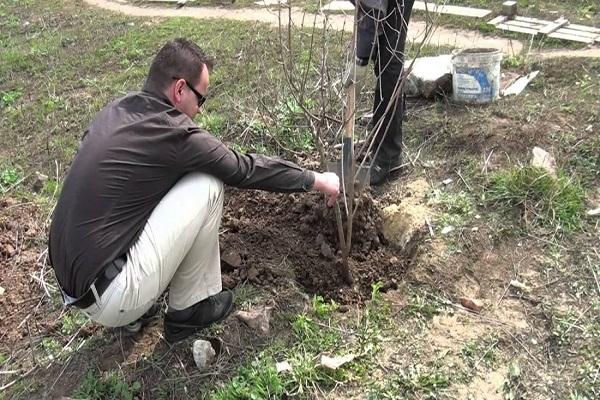
Suitable soil
All varieties are suitable for soil with neutral or slightly acidic acidity. It should be loose, not heavy, fertilized with the necessary substances.
For planting, choose a place that is shaded from direct sunlight.For viburnum, moist soil is important throughout the growing season, so shade is a way to avoid rapid evaporation of moisture from the ground.
Watering and feeding
Kalina needs regular feeding:
- Spring. Includes treatment with urea, potassium sulphide or wood ash.
- Summer. Top dressing with potassium-phosphorus complex fertilizers.
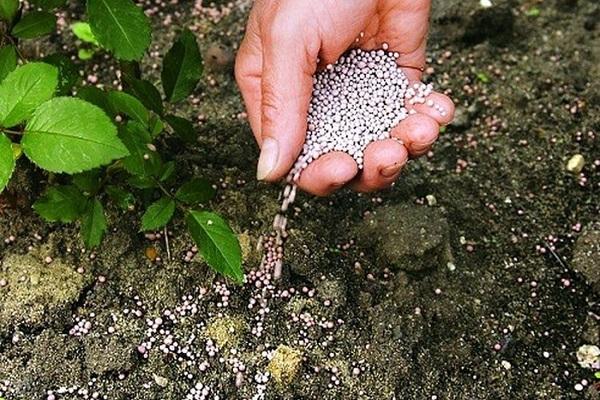
Every 2-3 years, when transplanting and digging up the soil, it is fertilized with compost.
Advice! Summer dry top dressing is replaced with liquid dressing in dry hot weather.
Watering for viburnum is carried out according to the scheme:
- weekly;
- 3-4 buckets for 1 adult bush.
Dry periods require more frequent watering.
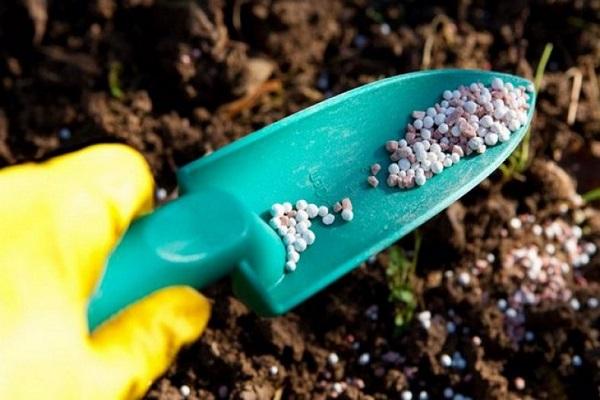
Pruning
To form the crown and increase the productivity of growth, 2 pruning is carried out:
- Spring. Sanitary, form-building.
- Autumn. Sanitary, correctional.

Diseases and pests
Kalina is susceptible to a limited number of diseases. Shrubs rarely get sick, depending on the characteristics of the variety.
- Powdery mildew. This is a fungal infection that spreads gradually. A whitish bloom and accumulation of moisture forms on the leaves. Shrubs cease to bloom and develop. To get rid of infection, the leaves are treated with fungicides.
- Frosty burn. A specific disease caused by low temperatures. The bark of the trunk cracks, the leaves wither. If damage is found, they are covered with special mixtures based on liquid clay.
- Fruit rot. Fungal infection that occurs on berries. They become dry, the shell cracks, turns gray. If there are empty cells, instead of fruits, the shrub is treated with copper-containing preparations, the damaged fruits are removed one by one.
- Viburnum leaf beetle. The "personal" parasite of viburnum - eats leaves, leaves only the central veins. The activity and spread of the leaf beetle leads to the loss of the bush. The damaged parts are recommended to be removed, the remaining bush is treated with karbofos.
- Black aphid. The appearance of the parasite on the viburnum can be seen by the twisted and discolored leaf plates. They begin to brown and dry. The fight against aphids begins with pruning branches and destroying colonies; the remaining bush is treated with Karbofos.
Viburnum is suitable for growing in suburban and personal plots, in gardens, park areas.
